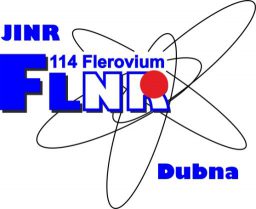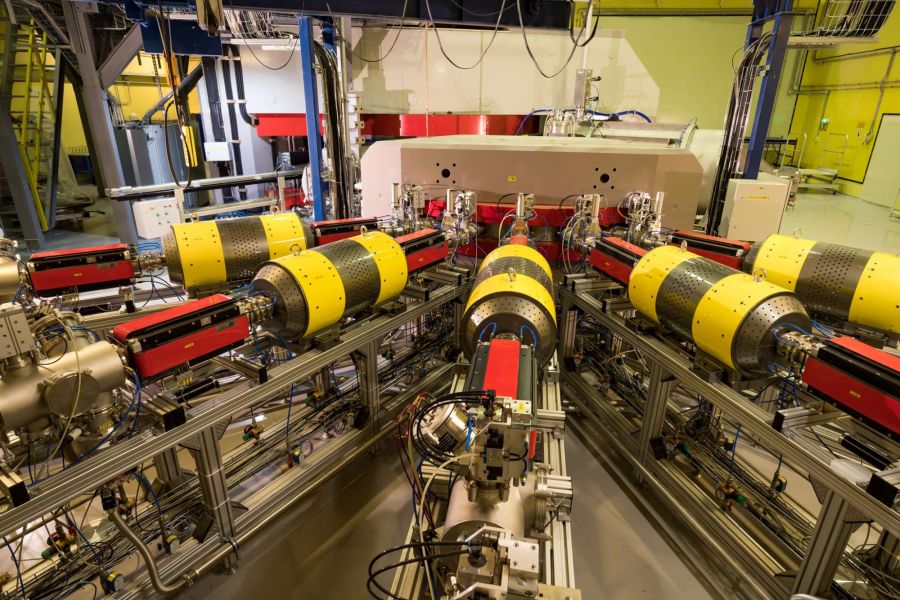SHE Factory: overview of the obtained results
According to the results of the last year the First JINR prize 2022 in Experimental Research contest was awarded to the team of authors of the cycle of works “The Factory of superheavy elements: first results”: Yu. Oganessian, S. Dmitriev, F. Abdullin, D. Ibadullayev, A. Polyakov, R. Sagaidak, V. Utyonkov, Yu. Tsyganov, M. Shumeiko, N. Kovrizhnykh. A series of experiments was preformed which resulted in synthesis of 286Mc, 275Ds, 276Ds, 272Hs, 268Sg и 264Lr new isotopes, the decay properties of 268Db were determined for the first time, new decay properties of known nuclei were discovered.
The main idea of the SHE Factory experiments was to study the capabilities of the complex which includes DC-280 accelerator having record intensity of the accelerated ions, almost an order of magnitude higher than that of any other world existing accelerator, and DGFRS-2, new separator which collects target nuclei on the detectors twice as effectively as compared to its predecessor, DGFRS separator. And the efficiency of the sought nuclei separation from the background reaction products is record high.
Experiments studying 243Am+4848Cа reactions were performed at six 48Ca energies. 125 Mc decay chains were registered. This number of chains is more than three times the number of decays of these isotopes in previous DGFRS experiment performed during 2003-2012. The efficiency of nuclei collection on detectors of the new separator is two times higher than DGFRS transmission. That’s very important for the experiments on the synthesis of new SHE heavier than Og (Z=118).
New, lightest 286Mc isotope was synthesized for the first time. Its decay properties are of great importance for identification of the new element 119, 243Am(54Cr,3n)294119 reaction product by correlation methods with the known nuclei and cross-reactions.
The 5n cross-section of 243Am+48Cа reaction channel was determined. This channel was previously observed only in reactions with even-in-Z target nuclei (one chain each in reactions with 244Pu and 242Pu). Maximum 243Am(48Ca,3n)288Mc reaction cross section was 17 pb (1 pb = 10-36 cm2 which is two times higher of the previously measured values and is the largest of all known cross sections for the formation of superheavy nuclei.
The decay properties of 21 isotopes of superheavy elements from Mc to Db were measured and determined with greater accuracy. Due to DGFRS-2 high suppression factor of background particles (by two orders of magnitude) 268Db alpha-decay was registered for the first time, the probability of which is about 50%. This led to the discovery of a new spontaneously fissionable 264Lr isotope. Because all previous estimates of 268Db half-life were based on the observation of spontaneous fission at the end of 288Mc decay chains which may be caused by both 268Db and 264Lr fission, one may claim that radioactive properties of 268Db were determined also for the first time.
A branch of 279Rg isotope spontaneous fission in 287Mc decay chain was registered for the first time. That made it possible to determine its stability relative to fission.
Also a series of experiments studying the isotopes of even elements in 242Pu+48Ca and 238U+48Ca reactions were carried out. 16 decay chains of 283Cn (Z=112) and its daughter nuclei up to 267Rf (Z=104) at two energies of 48Ca in the vicinity of Coulomb barrier of the reaction were registered in 238U+48Ca reaction. The intensity of 48Ca beam reached 6.5 mcA of particles which exceeded the capabilities of the world existing accelerators by a factor of 6.
This same isotope was observed after the decay of its mother isotope 287Fl in 242Pu(48Ca,3n)287Fl reaction. 69 chains of its decay were synthesized. In these DGFRS-2 experiments 11 new alpha-decays of 279Ds were registered. A significant increase in the amount of registered nuclei led to more exact determination of cross section for 242Pu(48Ca,3n)287Fl reaction which turned out to be three times higher than the previously known value.
25 chains of the even-even 286Fl isotope which with approximately equal probabilities undergo alpha-decay or fission spontaneously were synthesized in another channel of 242Pu(48Ca,4n)286Fl reaction.
Experiments on the synthesis of Ds isotopes in 232Th+48Ca reaction were also carried out. Their properties are important both for identification of the new element 120 in 249Cf+50Ti and 245Cm+54Cr reactions since alpha decays of 295,296120 nuclei lead to 275,276Ds isotopes, and for predictions of cross sections for formation of element 120 isotopes. For the first time six decay chains of new 276Ds isotope were synthesized whose alpha decay resulted in discovery of two more 272Hs and 268Sg isotopes. In one of these experiments measured reaction cross section was 0.007 picobarns which is comparable to the expected cross section for formation of new elements 119 and 120. A new 276Ds isotope was also synthesized. Alpha decay of this nucleus resulted in 271Hs, 267Sg and 263Rf isotopes which were previously obtained in 248Cm(26Mg,3n)271Hs reaction. So for the first time alpha decay was observed from the region of superheavy nuclei obtained in reactions with 48Ca ions to the region of nuclei which are considered known. This fact once again confirmed the reliability of entire set of results on the synthesis of superheavy nuclei.
The obtained results demonstrated the high sensitivity of the Superheavy Element Factory which is necessary for continuing research in the region of superheavy elements and synthesis of new elements – 119and 120.

